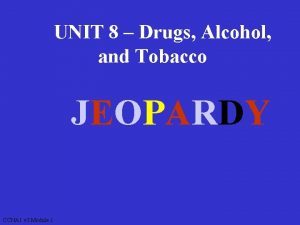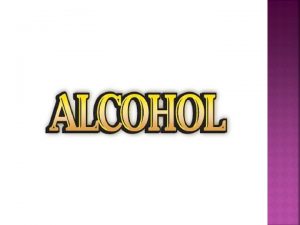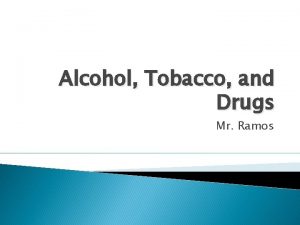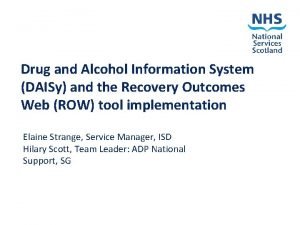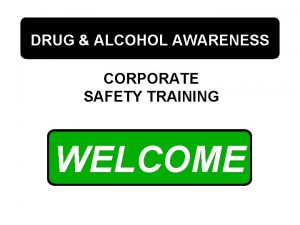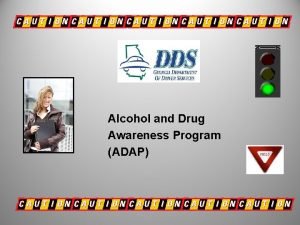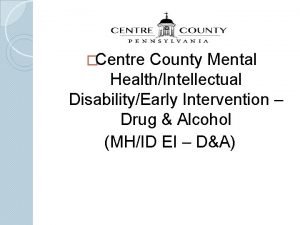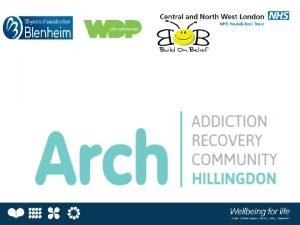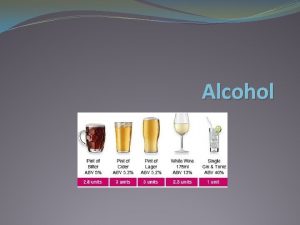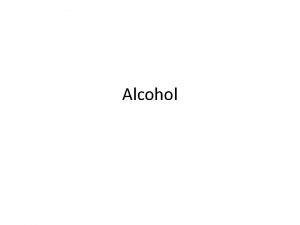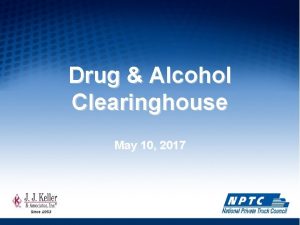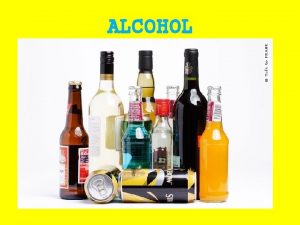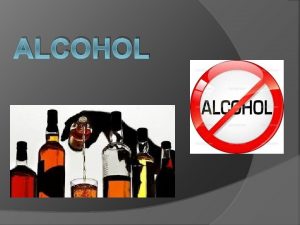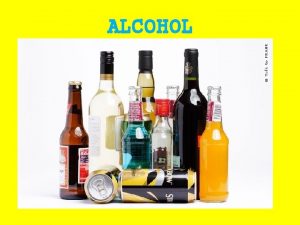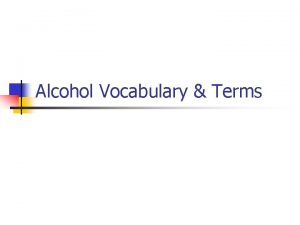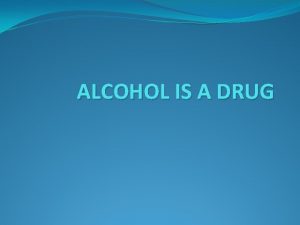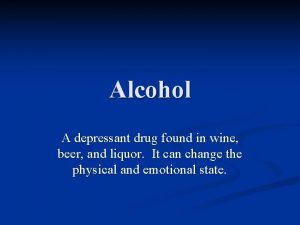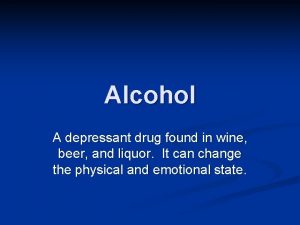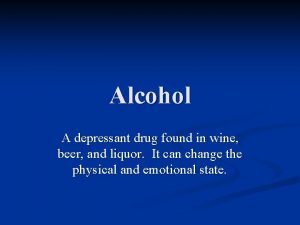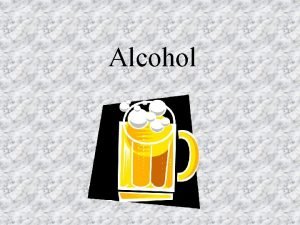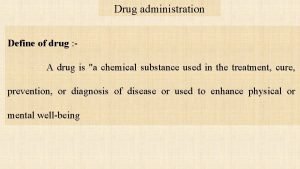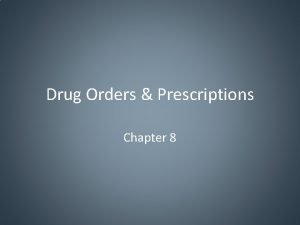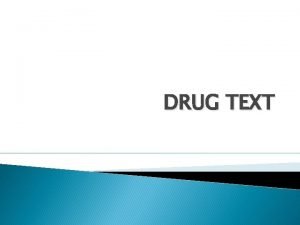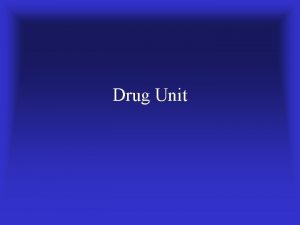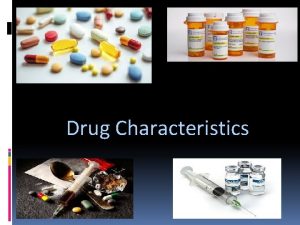ALCOHOL Alcohol Alcohol is the DRUG found in










































- Slides: 42

ALCOHOL

Alcohol • Alcohol is the DRUG found in Beer, Liquor and Wine • Alcohol is a depressant – Depressants slow down the nervous system.

Where does it come from? • Alcohol occurs in nature when yeast feeds on sugars in fruit, berries, vegetables, or grain. Ethyl Alcohol (which is the type found in beverages) is excreted from the natural product. • Are there other types of alcohol?

Types and sources of Alcohol • Wine – Examples? – Fruits are fermented • Beer – Examples? – Grains are fermented • Liquor – Examples? – Distilled Barley or Wine

Alcohol Content Beer Wine Liquor 4 -5% alcohol 15 -20% alcohol 30 -50% alcohol = 12 oz = 4 oz 1. 5 oz


Dangers of Alcohol and Drug Interactions

BAC • BAC is Blood Alcohol Concentration: This is the amount of alcohol in a person’s blood (it is based on a percentage) – BAC can be affected by: • • • Stomach Content Body size Time Mental State Medications Carbonation



Intoxication • Sometimes referred to as being “drunk” • Physical and Mental Changes caused by alcohol

Short-term effects • • Nausea Vomiting Impaired vision Slow reaction time Loss of judgment/ self control Lowered inhibitions Memory loss Dehydration (Kidneys produce more water, the water used to break down alcohol is taken from the rest of the body. Causes a headache and a hangover)

Short-term Effects (cont. ) • Breathing rates, pulse rates, and blood pressure, which initially increased, now decrease. A drinker may lose consciousness, slip into a coma, or die from alcohol poisoning • Blackout • Dilatation of blood vessels (causing the heart to work harder) • Impairs decision making • Emotional • Slurred Speech


Long-term Effects • Brain Damage: Shrunken brain cells and dead brain cells – From the lack of Oxygen and Dehydration • Irritation to the esophagus and stomach: bleeding, ulcers, cancer • High Blood Pressure, Anemia • Hepatitis (Inflammation of the liver) • Cirrhosis (Healthy liver tissue is replaced by scar tissue) • Liver Cancer • Small intestine Damage: decreased ability to absorb vitamins • Lowers immune system • Weight Gain • Regrets • Addiction

What do you need your liver for? Filtration system for the body • Stores energy and Iron • Stores vitamins • Takes chemical wastes and poisons from the blood and breaks them down

Teens and Drinking • Motor Vehicle Accidents are the #1 cause of death among teenagers, Alcohol is usually involved. • Binge Drinking (Very common among teens and college age kids): Having more than 5 drinks on one occasion. – This is extremely dangerous because breathing and heart beat become severely depressed and effects can be fatal. Alcohol poisoning can occur. Alcohol Poisoning occurs when you drink too much too fast.

Teens and Drinking Your future can be affected -Criminal Record: MIP (Minor in Possession), PI (Public Intoxication), Fake ID -Sexual Activity (Pregnancy, Unwanted Sex, STDs) -Teen bodies and brains are developing, so you are at a higher risk for long term damage

Drinking and Driving • Why is it dangerous? – Slowed reaction time – Impaired vision – Drowsy – Reduces coordination – Affects your judgement

What is a DUI? Driving Under the Influence (sometimes referred to as “DWI”- driving while intoxicated) The act of operating a motor vehicle after having consumed alcohol (or other drugs), to the degree that mental and motor skills are impaired.

California Laws California has two basic drunk driving laws, found in Vehicle Code section 23152, sections (a) and (b): • 23152(a) It is a misdemeanor to drive under the influence of alcohol and/or drugs. • 23152(b) It is a misdemeanor to drive with. 08% or more of alcohol in your blood.

Felony DUI Any person who, while under the influence of intoxicating liquor, or under the combined influence of intoxicating liquor and any drug, drives a vehicle and when so driving does any act forbidden by law or neglects any duty imposed by law in the driving of such vehicle, which act or neglect proximately causes bodily injury to any person other than himself, is guilty of a felony. [California Vehicle Code Section 23153. ] Added to the corpus delicti: 1. Violation of a Statute 2. Bodily Injury 3. Proximate Causation

Zero Tolerance Law • A law in all 50 states • Any person under the age of 21 who is driving with any amount of Alcohol in their system – Lose License – Fines – Community Service

What happens if you get pulled over? • The officer has reason to believe there is drinking and driving • Field sobriety testes are preformed • Blood, Breath, Urine tests to determine BAC • If you refuse a test or the BAC is. 08% or highertaken into custody • Car impounded

Field Sobriety Tests (1) recite the alphabet (2) count backwards (3) line-walking (4) finger-to-nose (5) heel-to-toe (6) balancing one foot at a time (7) fingers-to-thumb (8) hand pat (9) bending forward and backward with your eyes closed

Consequences • • Fines: $1300 + Probation DUI education program License suspension Property damage fines Insurance rates Injury or fatalities (charges in court)

Devastating Consequences • Every day, eight teens die in alcohol related car crashes in the United States • How would you feel if you were responsible for the death or injury of another person because you choose to drink and drive or let a friend drink and drive? • Drunk Drivers usually suffer less consequences than the innocent victims



BAC activity • Analyze the BACs of individuals who are attending a party where alcohol is served. • Determine each individual’s BAC at the end of the party and decide weather the individual can legally drive home.

Drivers Simulation • Record observations of Driver A and Driver B.

Prevention 1. Choose not to drink!! 2. Plan ahead: Designate a driver, bring money for a cab, have a back up ride 3. Do not ride with someone who has been drinking

How do I stop my friend from Drinking and Driving? • • Use a calm approach, suggest an alternative Make a joke about it Tell them you will not ride with them Locate keys and take away when they are preoccupied • Avoid embarrassing the person or being confrontational

Saying No to alcohol! • Don’t set yourself up • Find an alternative activity • Say that you will be the designated driver or the person who will watch out for your friends • State the consequences

Alcoholism • A disease that causes a person to loose control of their drinking behavior. – Stages: Problem Drinking, Tolerance, Dependence, Alcoholism – Warning Signs – Risk Factors – How it affects the family

FAS • Fetal Alcohol Syndrome: The fetus is exposed to alcohol when the Mother drinks during pregnancy – Brain deformities – Learning disabilities – Physical deformities

Treatment Programs • Alcoholics Anonymous • Al-Anon, Alateen



Liver When alcohol enters the liver, the liver breaks down alcohol into energy and the waste products carbon dioxide and water. The carbon dioxide is released from the body in the lungs. The water passes out of the body as breath vapor, perspiration, or urine. When people drink alcohol faster than the liver can break it down, they become intoxicated. Kidneys Alcohol prevents the release of body chemicals that regulates how much urine the kidneys make. The kidneys produce more urine than usual, and the drinker looses more water than usual. The drinker becomes very thirsty. In extreme cases, a drinker may loose water needed for the body to function properly.

Bloodstream What does alcohol do when alcohol enters the blood stream? When alcohol enters the blood, it causes the blood vessels to widen. More blood flows to the skin's surface. However, the drinker's body temperature drops as the increased blood flow to the surface allows body heat to escape. People who drink alcohol in cold weather to get warm actually accomplish the opposite.

Brain How does alcohol effect the brain? When alcohol reaches the brain, it immediately has a depressant effect. People who drink alcohol may describe the change as relaxing. What they actually experience are physical changes such as loss of sensation and a decrease in sharpness of vision, hearing, and other senses. Alcohol also affects the parts of the brain that control muscle coordination, which is why drinkers may loose their balance or stumble. If drinking continues, alcohol depresses the part of the brain that controls breathing and heart beat. Breathing rates, pulse rates, and blood pressure, which initially increased, now decrease. A drinker may loose consciousness, slip into a coma, or die from alcohol poisoning Heavy drinkers and many first-time drinkers may suffer blackouts. Other people recall seeing the drinker walking, talking, and in control. The following day however, the drinker has no memory of some events the day before.
 Define adulteration of crude drugs
Define adulteration of crude drugs Ccna drugs
Ccna drugs Why is alcohol considered a drug
Why is alcohol considered a drug Tobacco
Tobacco Daisy drug and alcohol
Daisy drug and alcohol Drug and alcohol safety training
Drug and alcohol safety training Tadra is an acronym for georgia's
Tadra is an acronym for georgia's What effect might alcohol and other drug
What effect might alcohol and other drug 12 core functions substance abuse
12 core functions substance abuse Centre county drug and alcohol
Centre county drug and alcohol Arch hillingdon
Arch hillingdon Ketone to tertiary alcohol
Ketone to tertiary alcohol High boiling point alcohols
High boiling point alcohols Khi nào hổ mẹ dạy hổ con săn mồi
Khi nào hổ mẹ dạy hổ con săn mồi điện thế nghỉ
điện thế nghỉ Nguyên nhân của sự mỏi cơ sinh 8
Nguyên nhân của sự mỏi cơ sinh 8 Trời xanh đây là của chúng ta thể thơ
Trời xanh đây là của chúng ta thể thơ Chó sói
Chó sói Thiếu nhi thế giới liên hoan
Thiếu nhi thế giới liên hoan Fecboak
Fecboak Một số thể thơ truyền thống
Một số thể thơ truyền thống Các châu lục và đại dương trên thế giới
Các châu lục và đại dương trên thế giới Thế nào là hệ số cao nhất
Thế nào là hệ số cao nhất Hệ hô hấp
Hệ hô hấp Bảng số nguyên tố lớn hơn 1000
Bảng số nguyên tố lớn hơn 1000 Tư thế ngồi viết
Tư thế ngồi viết Hình ảnh bộ gõ cơ thể búng tay
Hình ảnh bộ gõ cơ thể búng tay đặc điểm cơ thể của người tối cổ
đặc điểm cơ thể của người tối cổ Cách giải mật thư tọa độ
Cách giải mật thư tọa độ Thang điểm glasgow
Thang điểm glasgow ưu thế lai là gì
ưu thế lai là gì Thẻ vin
Thẻ vin Cái miệng xinh xinh thế chỉ nói điều hay thôi
Cái miệng xinh xinh thế chỉ nói điều hay thôi Thơ thất ngôn tứ tuyệt đường luật
Thơ thất ngôn tứ tuyệt đường luật Các châu lục và đại dương trên thế giới
Các châu lục và đại dương trên thế giới Từ ngữ thể hiện lòng nhân hậu
Từ ngữ thể hiện lòng nhân hậu Bổ thể
Bổ thể Tư thế ngồi viết
Tư thế ngồi viết Diễn thế sinh thái là
Diễn thế sinh thái là Frameset trong html5
Frameset trong html5 V cc cc
V cc cc Phép trừ bù
Phép trừ bù Hát lên người ơi
Hát lên người ơi

